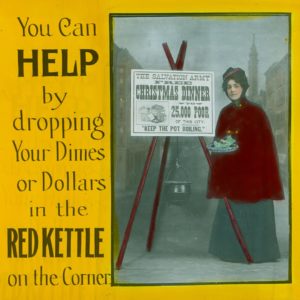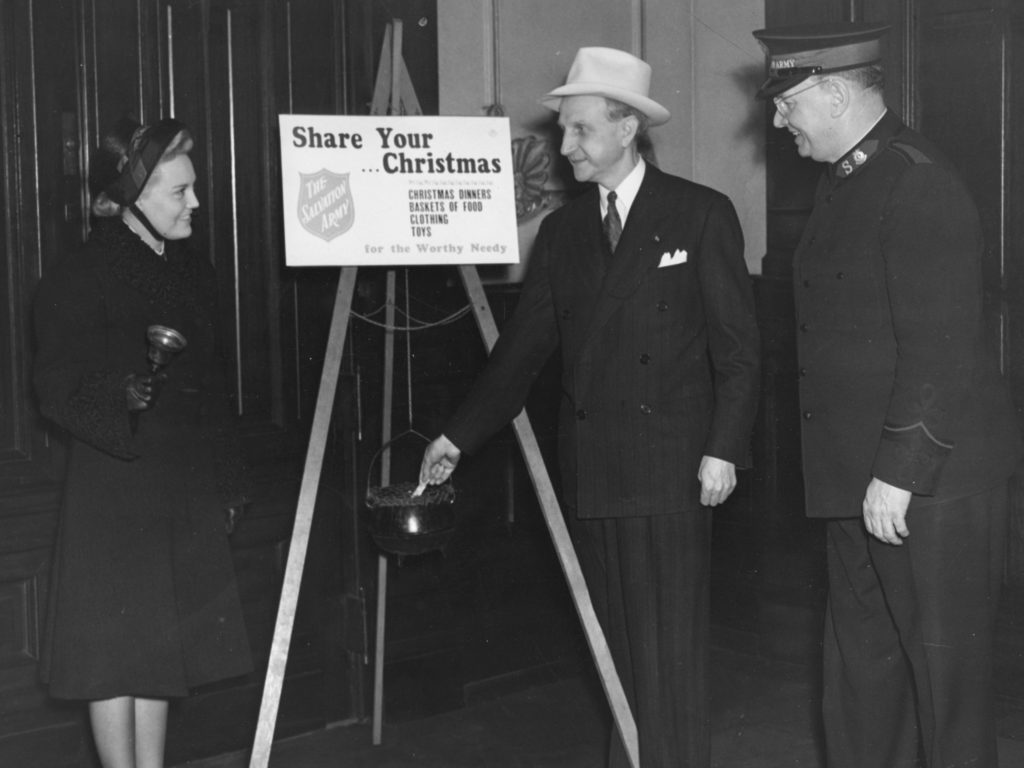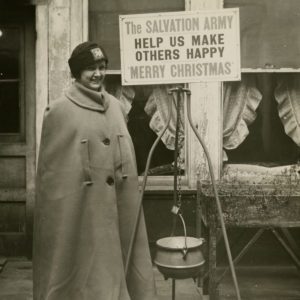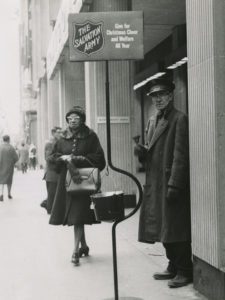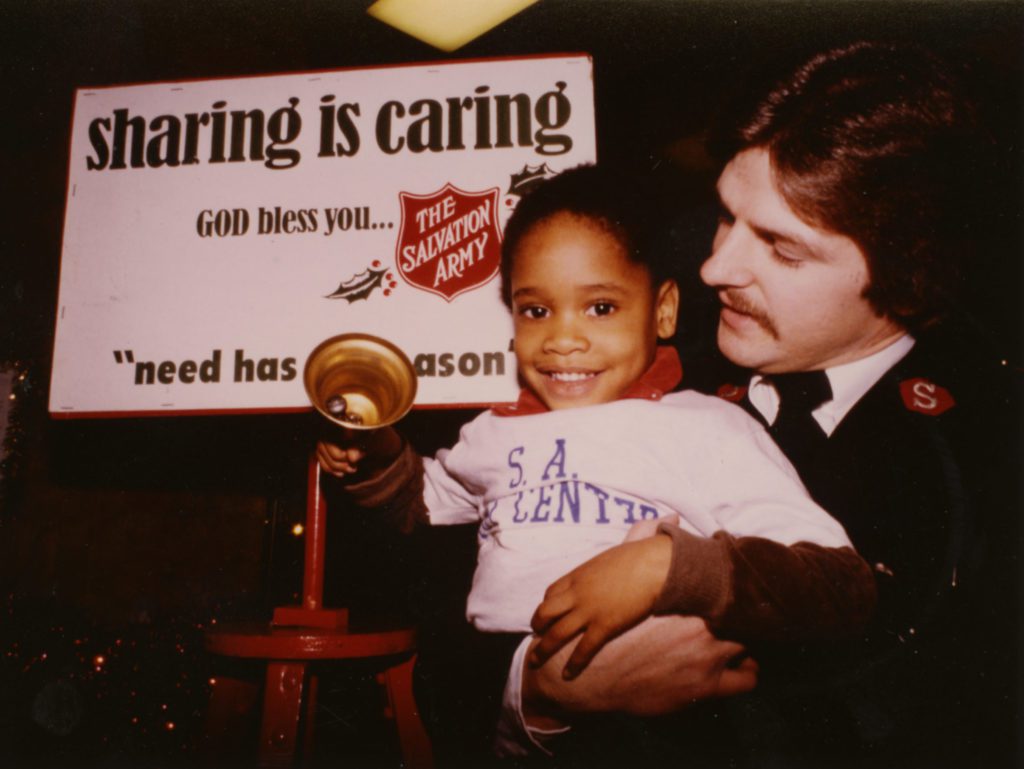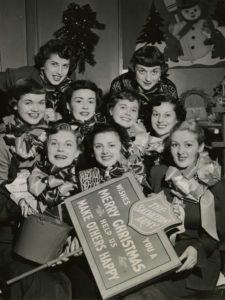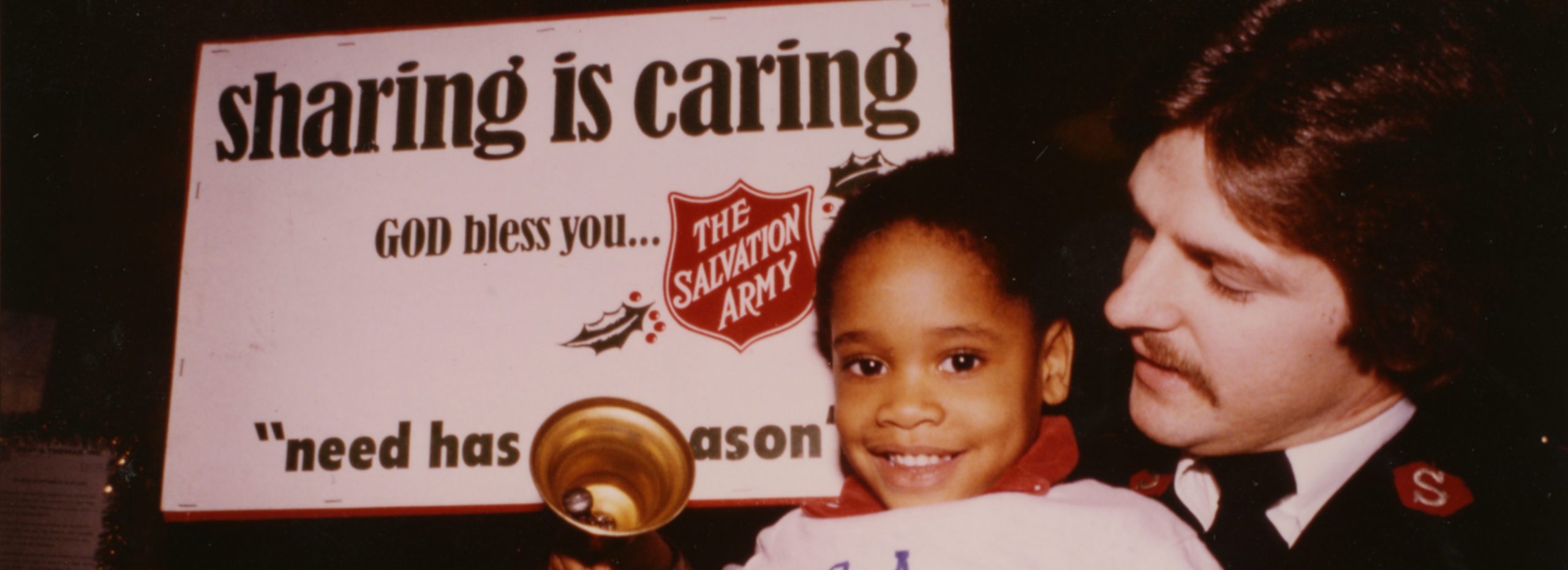
Keeping the Pot Boiling
A good campaign slogan communicates specific needs or goals in a few memorable words. The Red Kettle Campaign has featured a series of these throughout the past 130 years.
The first slogan, “Keep the Pot Boiling,” is believed to have been coined by Major James J. Keppel around 1894 when he was serving as District Commander in San Francisco. Today, this slogan evokes images of a warm hearth with an old-fashioned cast-iron kettle boiling over with abundant food. In the 1890s the phrase also meant that one had enough money to pay the rent and bills and have enough food to eat. Today, the phrase “making ends meet” conveys the same message.
In successive decades, other official slogans used included: “Christmas Cheer and Welfare all Year,” (mid-late 20th Century) “Sharing is Caring,” (1971-2007) “Need Has no Season,” (1973-2004) and the current Salvation Army brand promise and annual campaign slogan “Doing the Most Good.” (2005-present) All of these slogans communicate the annual campaign goals or values.
In 2005, The Salvation Army centralized its annual campaign messaging. At this time, the Army’s National Headquarters in Arlington, Virginia began developing annual Red Kettle Campaign slogans and materials for all of the four US territories to use. Prior to this time, each territory developed their own slogans and promotional materials.
As social media has become increasingly important in how Americans interact, annual campaign hashtags communicate a specific theme for each year. These have included #RedKettleReason (2014, 2017), #FightForGood (2019), and #RescueChristmas (2020).
Click image to enlarge.

